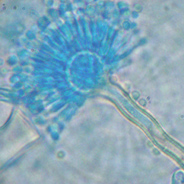
Most peoples’ first concern about moulds, and rightly so, is for their health. Moulds can cause health problems, but they don’t always do so. There is a lot of mis-information online and other media about mould and health effects. Though research on mould health effects is ongoing, little is documented on this subject. This has to do with a few factors, most of which are discussed here. You may also be interested to read Frequently Asked Mould Questions.
Mould Health Effects and Human Diversity
One of the biggest factors in whether mould will have strong effects or no effects is the diversity factor. Two people standing in the same room will often have different sensitivities to a mould growing around the window. The first person may begin to feel stuffed up or get a headache, while the second might not notice anything. It’s very difficult to tell why different people have different sensitivities to moulds, but it ends up making a difference in whether a person can stand to be in a room or not!
On top of differing sensitivities, there is the oft-mentioned difference between the immune system of healthy adults versus the elderly, children, and those with a weak immune system. It probably won’t surprise anyone to learn that the latter group generally has a stronger reaction to mould. It isn’t a given that this group will have a reaction, it’s just more likely.
Allergies and Allergic Responses
One of the mould health effects that people can have is mould allergy. This type of response and its symptoms is familiar to most people (stuffy/runny nose, itchy eyes – the usual), and it is caused by your body trying to attack the mould particles in the same way it would try to fight off a sickness. Mould allergies or sensitivity can develop in people who are exposed to mould over time.
Mould Toxins versus Mould Infection
Allergies rarely make the news. Usually what gets reported and sensationalized are the more negative causes of mould reactions: toxins and infection.

Toxins: Sometimes certain moulds create toxic substances when they are growing on household materials. Moulds that can do so are ‘toxigenic’, and often referred to as ‘toxic moulds’. This is a misnomer, as it implies that in all cases, the mould itself is toxic. The reality is that the mould can create toxins, but does not always do so. When they do, people can be exposed to them by touching the surface or by inhaling mould or dust particles that have the toxin on them. The toxin is a chemical that causes negative effects on the human body, but there is no mould growing in the body. When mould starts growing in or on the human body, that is infection.
Infection: Infection is fairly rare, and is more of an issue when a person’s immune system is weak or compromised. When people talk about infection by a mould, they are generally speaking of Aspergillus (pronounced ‘as-per-jill-us’). The spores of Aspergillus are very small and tend to float around in the air for quite awhile. Most people inhale many of these spores every day and never have a problem.
Another example of infection that was in the news recently was a slew of eye infections by a species of Fusarium (pronounced ‘fu-sair-ree-um’) which had contaminated a contact lens solution. This type of infection is not common, but can be very severe, potentially causing blindness.
Mould Health Effects Associated with Mould Growth in the Home
It is important to note that in the same way that a person will not always have symptoms in reaction to mould growth, if a person does experience certain symptoms, it does not always mean they are related to mould at all. Mould is a tricky organism to make definite statements about, and if you suspect that your health is being affected by it, bring your concerns to your doctor.
There are a lot of symptoms that are potentially linked with mould, and if you search the internet, you may find sites that list every symptom under the sun. The following list is by no means complete, and it is certainly not diagnostic. All of these symptoms can also be caused by other factors.
Some of the mould health effects (symptoms) that have been associated with exposure to household mould growth include:
- cough
- congestion or runny nose
- eye irritation
- skin irritation
- respiratory irritation
- joint aches
- headaches
- fatigue
If you are looking for information on how to proceed with mould removal, continue to Mould in my Home.
Latest posts by Jackson Kung'u (see all)
- Symptoms of mold exposure - September 4, 2015
- Mildew and Moisture in Homes - September 3, 2015
- Mould Removal - September 2, 2015
